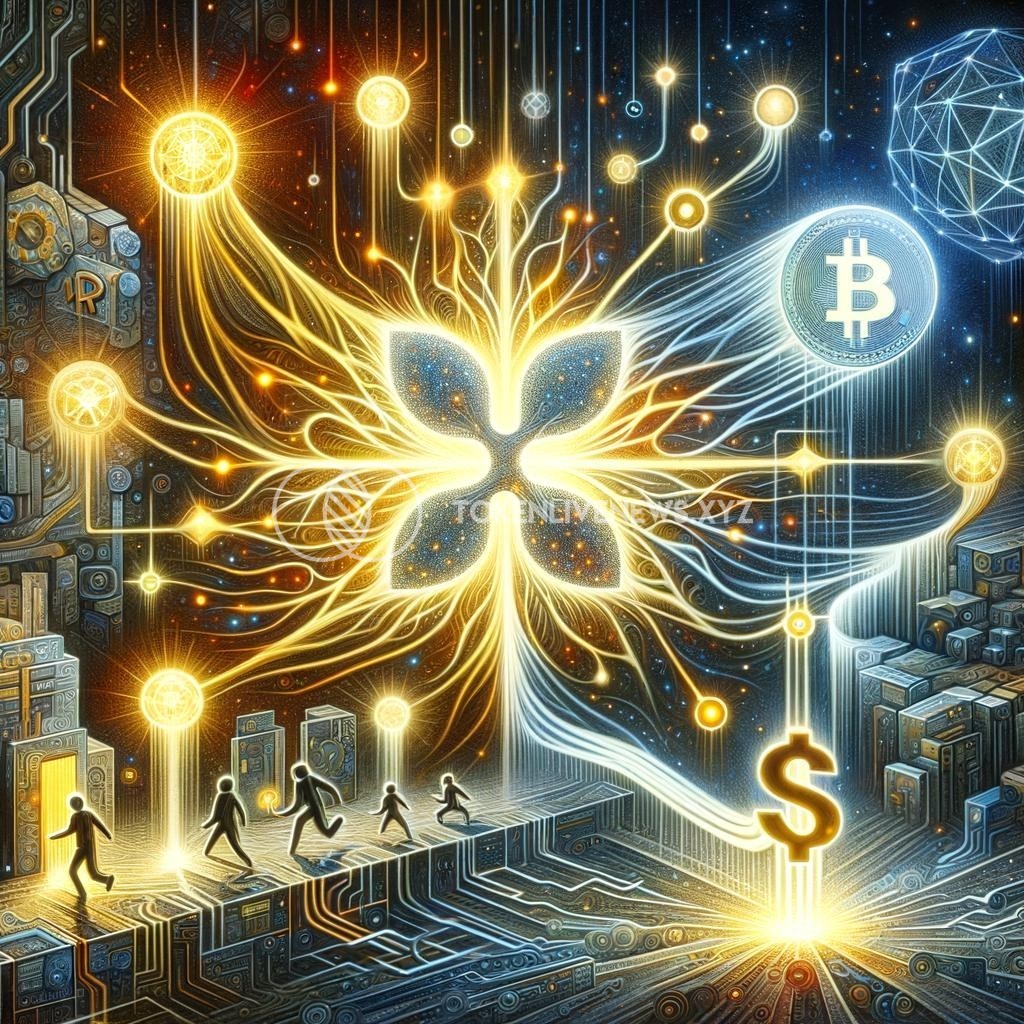Title: Transforming Digital Transactions: XRP in the Internet of Value
Introduction:
In our ever-evolving digital landscape, the Internet of Things (IoT) has paved the way for the establishment of a new paradigm – the Internet of Value (IoV). This innovative concept aims to streamline digital transactions and revolutionize the way we exchange value. Among the technologies driving this transformation is Ripple‘s digital currency, XRP. In this article, we will explore how XRP is reshaping digital transactions within the IoV and its potential to revolutionize the financial industry.
1. The Rise of the Internet of Value:
The IoV envisions a future where the seamless transfer of value is as effortless as sending an email. Traditional financial systems, plagued by inefficiencies, friction, and high transaction costs, are gradually giving way to decentralized networks powered by blockchain technology. Ripple’s XRP has emerged as a leading digital asset in facilitating near-instant and cost-effective cross-border transactions, eliminating the need for intermediaries and complex settlement processes.
2. The Unique Features of XRP:
One of the key aspects that sets XRP apart from other cryptocurrencies is its consensus mechanism known as the Ripple Protocol Consensus Algorithm (RPCA). This consensus algorithm allows for the efficient validation of transactions within a network, enabling XRP to settle nearly in real-time, reducing settlement risk and minimizing liquidity needs. With a pre-mined supply of 100 billion XRP, XRP provides stability and scalability, paving the way for mass adoption and integration into existing financial infrastructures.
3. Bridging Fiat Currencies and Digital Assets:
XRP’s real value lies in its ability to bridge traditional fiat currencies and digital assets, acting as a mediator in cross-border transactions. By establishing liquidity corridors and partnerships with financial institutions worldwide, Ripple aims to provide a seamless experience for individuals and institutions alike. XRP’s rapid settlement time and low transaction fees make it an ideal solution for remittances and international money transfers, reducing both time and costs associated with these processes.
4. Potential Use Cases:
The transformative potential of XRP extends far beyond remittances. The technology can be applied to various sectors, ranging from supply chain finance to micropayments and even decentralized finance (DeFi). Smart contracts utilizing XRP have the potential to automate complex financial agreements, improving efficiency and reducing the risk of fraud. Additionally, the seamless interoperability between XRP and other cryptocurrencies opens new doors for decentralized exchanges and liquidity pools.
5. The Future Impact of XRP and IoV:
As more industries recognize the benefits of the IoV, XRP is well-positioned to become a fundamental element in the global financial ecosystem. Its ability to facilitate instant and low-cost transfers, combined with its scalability and flexibility, positions XRP as a crucial bridge between traditional finance and the digital realm. With ongoing advancements in blockchain technology and regulatory frameworks, the adoption of XRP is expected to accelerate, paving the way for a more inclusive and efficient global economy.
Conclusion:
XRP’s role in transforming digital transactions within the Internet of Value is undeniable. Its unique features, such as near-instant settlement and low transaction costs, make it a game-changer in the financial industry. As Ripple continues to expand its network of partnerships and liquidity corridors, the adoption of XRP is poised to revolutionize the way we exchange value, bringing us closer to a future where global transactions are as seamless as a mere mouse click.







